My sister called the night before that it was better to start the journey from her house in Santa Cruz, which is about a 40-minute drive from Fremont. And so, very early that morning, just several minutes after we had gingerly packed the Tupperwares with our favorite breakfast and had filled the thermos bottle with coffee, we were already traversing the Santa Cruz mountains along Highway 17, en route to her house, which is situated close to the USC-Santa Cruz main entrance.
On that sunny Tuesday of January 4, 2005, we had on our map, the mountains of Santa Ynez, as well as some nearby cities situated in the county of Santa Barbara, CA.
We had planned to visit the opulent Hearst Castle in closer San Simeon but backed out at the last minute after we learned from their website, that the shorter route via Highway 1, was closed due to rock slides.
We reached Highway 101 – more scenic than Interstate-5 -after we deftly maneuvered the backdoor of the Santa Cruz mountains using Salinas Road. From thereon, Highway 101 regaled us with its splendid views of mostly vineyards, ranches, a bit of the coastline of the Pacific Ocean in Pismo and Arroyo Grande, and the gentle, rolling countryside of the area tuck neatly between the Bay Area and Southern California.
After we stopped briefly for gas in Arroyo Grande, we were just merely an hour’s drive away from the hotel which we called home for the remainder of our trip. We stayed at the Best Western-Andersen’s Pea Soup in Buellton, CA. Like most of the hotels in the surrounding area, the design was Danish-inspired. This was due to the fact that Buellton was a mere 5-minutes drive away from the smaller but more popular Danish village/city of Solvang.
There, cobblestone courtyards, windmills, brick sidewalks, thatched rooftops, and cozy coffee shops, offered us already-bored denizens from the dreary, concrete jungle of the Bay Area, the unique flavor of Europe right here in California.

After we unloaded all our gear in our hotel room, we wasted no time and hied off to the main city of Santa Barbara, which was another hour spent leisurely cruising 101, with the snow-capped mountains of San Rafael watching us from the distance.
We arrived at the archaic Mission Santa Barbara Church at 2:30 pm – exactly 7 hours after we left Santa Cruz that Tuesday morning. The weather was, fortunately, still crisp and sunny that particular afternoon in spite of rains clouds that loomed from the southern front. An hour later, we found ourselves at the Santa Barbara wharf, where we marveled at the fantastic, time-tested combination of mountains and sea scenery. A place sure to evoke fond memories of one’s glorious past, wherever one may have originated from.
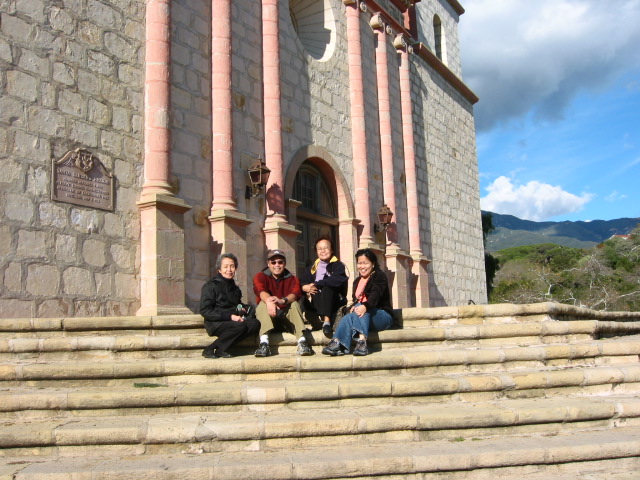
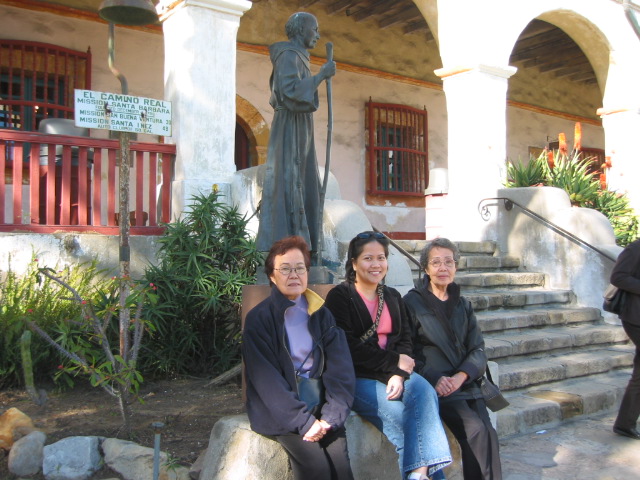
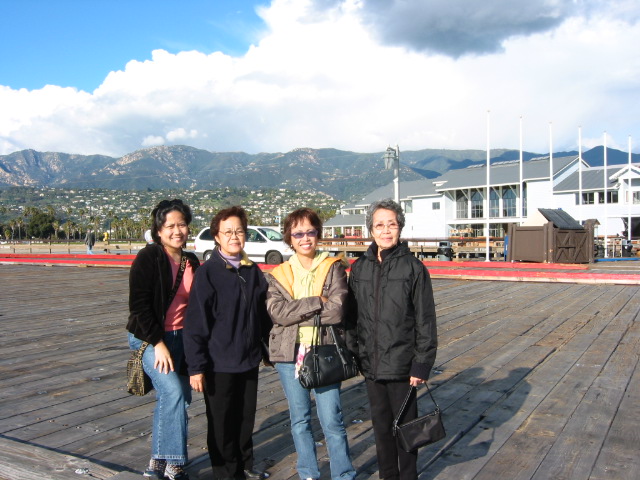
The tight but busy streets of downtown Santa Barbara guided us in our search for Highway 154 as we preferred to venture the twisting but spectacular San Marcos Pass rather than to return to Buellton using the now, for us, redundant Highway 101.
The Santa Ynez mountains run like a wall along the south coast of California that stretch from east to west. There are only three routes out of Santa Barbara to the north that cross these mountains: Gaviota Pass, Refugio Pass, and San Marcos Pass. San Marcos Pass is the shortest route of these three. The San Marcos Pass summit is about 8 miles northwest of Santa Barbara.
San Marcos Pass, punctuated by spectacular views of Lake Cachuma and highlighted in part by the grandeur of the Los Padres National Forest and the San Rafael Mountains, is probably one of the most scenic roadways in the entire state of California.
The first people to live on San Marcos Pass were the Chumash. They originally called it “Malames”. The Chumash are now gone, but their memories linger on (courtesy of a classy resort/casino) and their rock paintings can still be found in many places on the Pass, among them, the Chumash Painted Cave State Historic Park.
We bade farewell to the San Marcos Pass as soon as we descended 154 and cut through the towns of Santa Ynez and Solvang to finally reach our hotel in Buellton via Highway 246…instead of continuing on to the historic town of Los Olivos – known for its numerous wineries as well as its expansive views of the Santa Barbara Valley. Both Highways 154 and 246 will eventually merge with Highway 101 somewhere along with their respective ways.
We could not resist the charm of ‘Europeanesque’, Solvang so we decided to refresh our flagging spirits by settling down into one of the cozier tables that also offered a nice view of the streets from inside the Mortensen’s Danish Bakery/Shop, where we had their ‘house special’ bread and coffee.
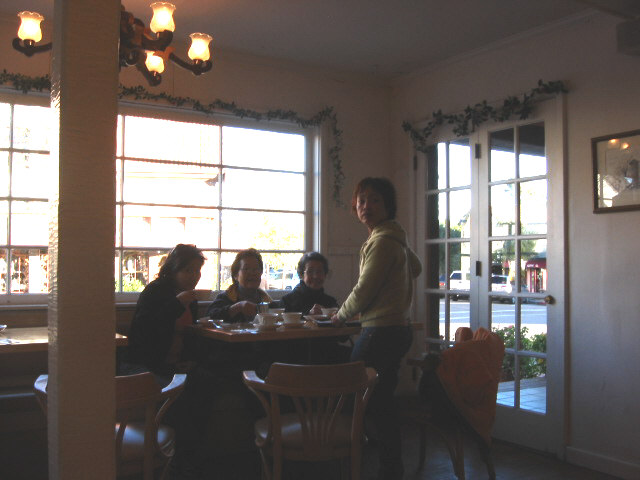
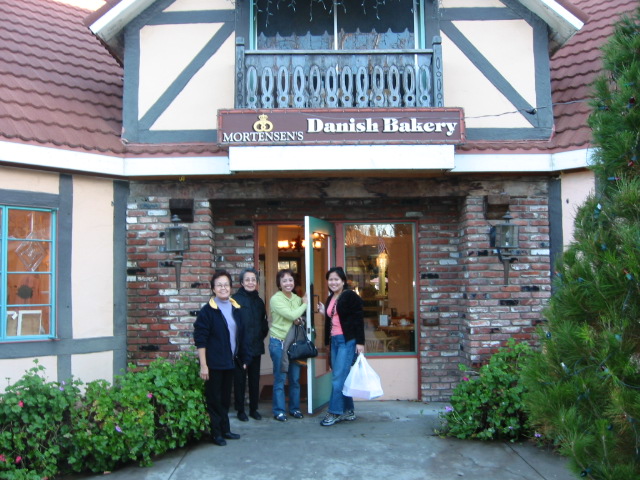
The bread’s unusually sweet fillings and the caffeine boost in the numerous cups of coffee we had, gave us back the energy we needed to continue on for the long night ahead. Pictures were taken along the brick-laden streets of Solvang as well as nostalgic sceneries among the horse ranches and the ostrich farm we passed-by, by on the way back to our hotel in Buellton.
It was already dark and the traffic discernably light -except for the brief but gaiety Christmas lights we saw at Solvang as our Jeep plodded back along Highway 246…perhaps wondering where all the magnificent vistas had gone – as we headed for the Chumash Casino and Resort – a convenient 15-minute drive from our hotel.
Once inside the casino, the creations of men and their mighty, money-making (or, shall I say, ‘money-taking’) slot machines plus the ritzy ambiance of the place, once again, tried to mesmerize us with the false sense of beauty of the materialistic-side of things on this part of the Earth.
We already knew better. The natural beauty of the places which we had all seen earlier, was already forever etched in our minds for as long as we will all live…and will be impossible, for any artificial places of recreation that will probably be created by man, to take them all away from us.

